|
|
||
 |
 |
 |
 |
|
 |
|
ВЕРНУТЬСЯ В МОТОКАТАЛОГ
|
||
| Yamaha TZ750 | ||
|
Yamaha TZ750 Gallery
1977 yamaha tz 750 d
1972 Yamaha TZ750
1972 Yamaha TZ750
1972 Yamaha TZ750
Leon Cortes ready to roll on his TZ750!
Norm Randall's TZ750, ridden by Wayne Gow at Phillip Island Jan 2004
Big Brothers
Right from the conception of Yamaha's all conquering TZ350 and 250 the factory was already developing a 700cc, 4 cylinder "doubled up" version of the 350cc twin. By casting special, wider engine cases, to allow the fitment of what was, essentially ( though not exactly ), a pair of 350 top ends, they had created an in-line 4 cylinder 2 stroke production racer engine, in the bigger capacity.
Despite releasing nine different models of factory 500cc GP race bikes for the contracted top level riders to use, it wasn't until the end of the decade that Yamaha released their production 500cc GP racer. Unlike the 750, this bike was a little more unique when compared to the smaller capacity twins. The mighty TZ 750 In 1972 Suzuki stunned the world at the Daytona 200 by turning up with a brace of watercooled, 750cc triple cylinder racers producing an incredible (for the early 70's) 100bhp. Unfortunately for them, all of the bikes DNF'd due mainly to the power destroying their rear tyres. The cards were on the table, Yamaha knew they had to do something to counter this threat and also that of Kawasaki's immensely fast, yet at times un-reliable KR750, if it was to have any chance in the new Formula 750 class. A prototype was constructed and Kel Carruthers tested it, coming away believing the approximate 90bhp it was producing was "lazy" and the bike was capable of a lot more. He was right.
Picture: TZ750A ( Courtesy Joris van de Wiele ) Technically, though very similar to the TZ350 motor-wise, it differed in a few crucial areas, these being: 1. The head's squish band was reduced from the 350's 2.0mm to 1mm and it's combustion chamber was made a little deeper so as to keep the compression ratio to 7.3:1. 2. The exhaust port was lowered 1.5mm and four petal reed valves added to help control the influx of fuel mixture from the 34mm Mikuni carbs and to help "tame" the power delivery of this awesome machine , along with an additional fifth transfer port, "inlet" port if you like. 3. The 64mm dia. pistons had inlet holes cast into their rear, though a few of the early examples did not have this. 4. The four cylinder firing order was 1 and 4 (simultaneously) then 2 and 3. Due to the difficulty the factory had trying to fit the four huge expansion chambers underneath the bike they chose to make the belly section of each basically box shaped to utilise the limited space available. Unfortunately the shape caused the pipes to be prone to splitting open, a problem rectified by owners and tuners by simply cutting each pipe open and welding short pieces of spoke wire across in an "X" pattern as a reinforcement measure. Other problems such as cylinder head nuts splitting causing water leaks and main bearings seizing appeared at times as well.
The "C" was unchanged from the "B" and was really just a way the factory could supply the big machines to those in need while the "D" was being developed and produced.
The OW31 works racer was released around this time. Motor-wise the bike had 6 transfer ports per cylinder, unlike the stock TZ750's. Other improvements over the customer 750's were copious amounts of titanium and magnesium to save 18kg in weight and a mono-shock frame. (Picture: OW31 factory poster shot supplied by Tim Keyes.)
( Picture: OW31 cylinder, courtesy of YamahaRick ) 1977's TZ750 "D" was marketed by Yamaha as a "works" OW31 replica and as a result a high percentage of (though not all) owners like to claim their "D"s are OW31's, when in fact they are little more than a mono-shock "C" with mufflers. (Still an absolutely awesome machine none-the-less.) None of the exotic metals or components from the OW31 were used on the "D", obviously to keep costs down. The only changes to the motor were alterations to the pistons, exhaust ports, jetting, crankshafts and ignition wiring. Other components to receive an upgrade were the exhausts, which now had the left hand outer pipe twisting around behind the carbs to allow the chambers underneath the motor to be the correct round section. The exhausts were also now fitted with silencers, and the frame bracing was increased. Only about 20 or so genuine OW31's were produced that year, and just 10 more (30) TZ750 "D"s. The "D"s sold for £7,000 including a spares kit.
Picture: TZ750F factory shot (Courtesy John Hulme) Sadly, the FIM dropped the Formula 750 class from World Championship status in 1979, effectively ending the TZ750's reign. Apart from competitively running in various Formula One classes throughout the world until 1983, and of course, today's "Forgotten Era" class racing, the "beast" has become little more than a fond memory of those who raced, worked on, and observed this incredible machine. Not forgetting of course, a truly prized possession of the lucky few who still own one. The last TZ750 "F" was sold in January 1983. |
||

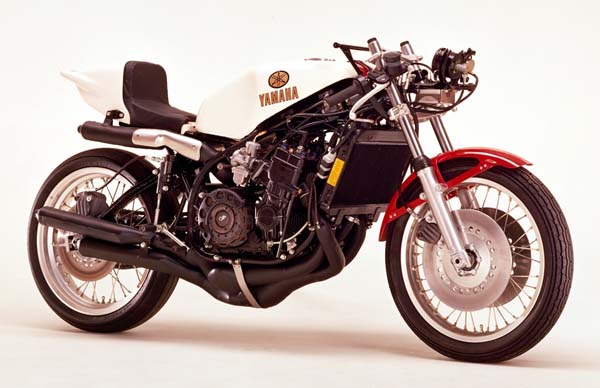
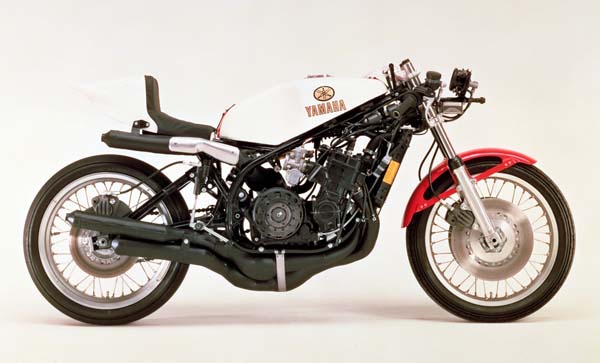
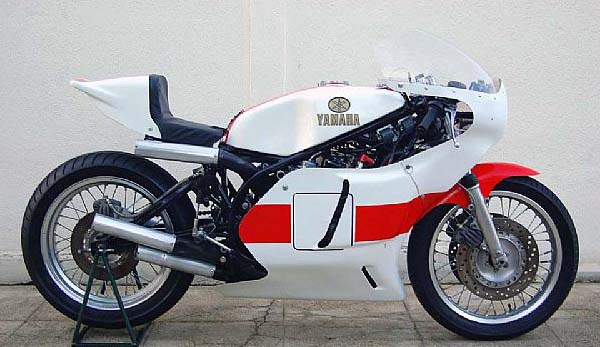
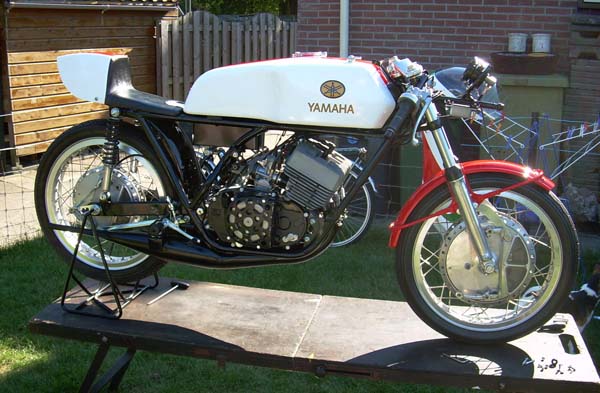
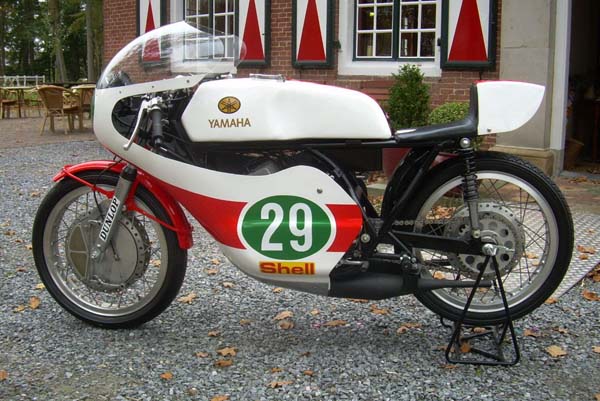
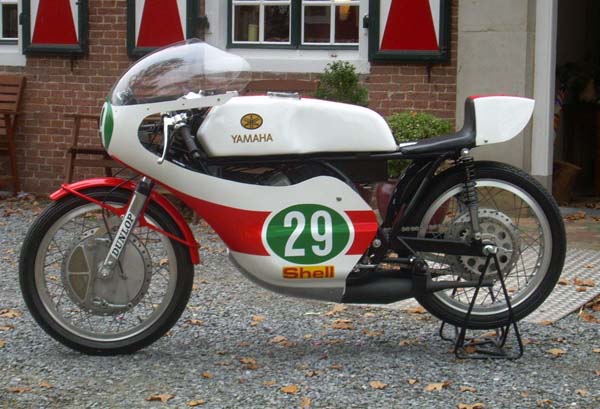
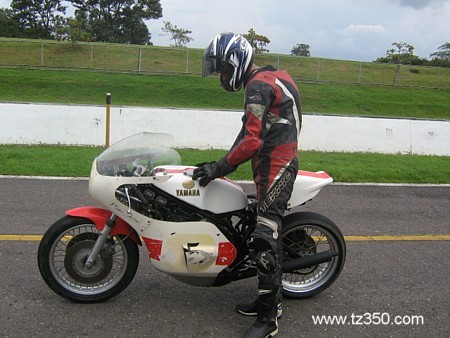
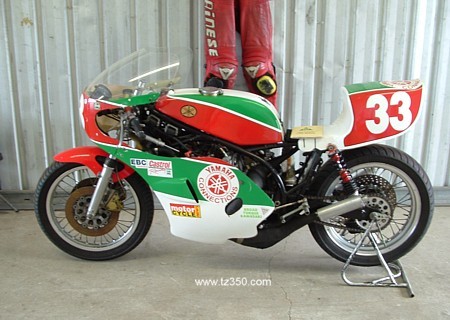
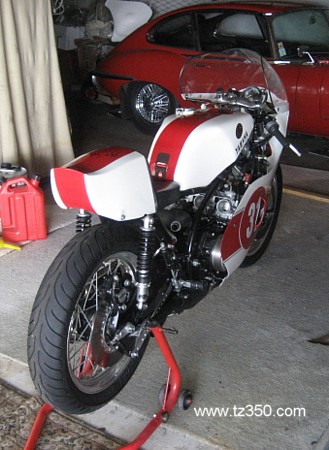 Picture:
Kerry Wilton's TZ750B
Picture:
Kerry Wilton's TZ750B




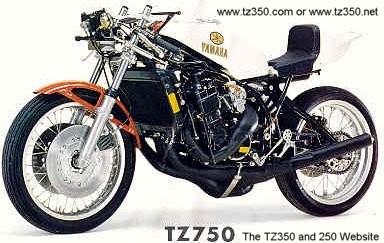 Over
the next two years, 1978 and 1979, 162 more of the "OW31 replica" TZ750's
were made. Unfortunately, the bikes remained basically unchanged from the "D"
model, apart from 6 petal reed valves being introduced, though with an
output of 120bhp @ 11,000rpm utilising a full 747cc and pushing just 152kg
dry, they were not to be ignored. ( "They" say the roofs of the transfers
had their angles changed with the "F", though this is unconfirmed.)
Over
the next two years, 1978 and 1979, 162 more of the "OW31 replica" TZ750's
were made. Unfortunately, the bikes remained basically unchanged from the "D"
model, apart from 6 petal reed valves being introduced, though with an
output of 120bhp @ 11,000rpm utilising a full 747cc and pushing just 152kg
dry, they were not to be ignored. ( "They" say the roofs of the transfers
had their angles changed with the "F", though this is unconfirmed.)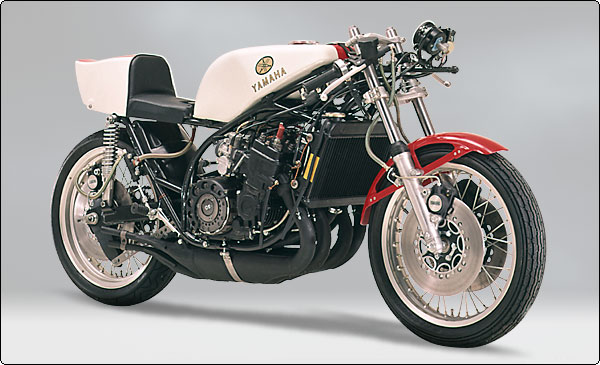
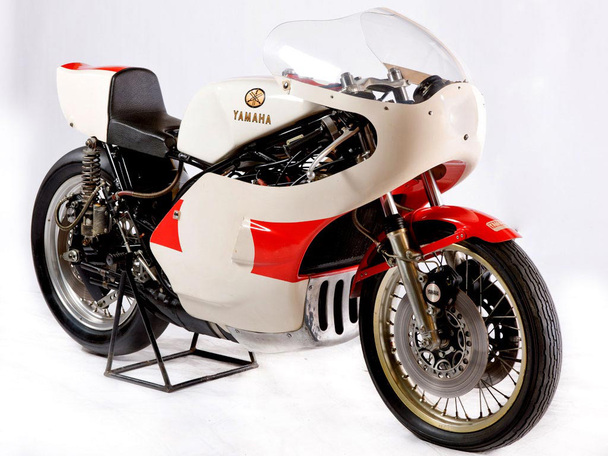




















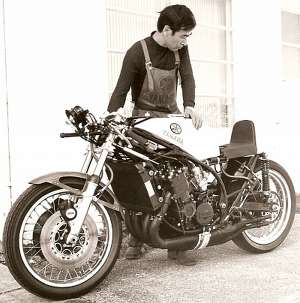
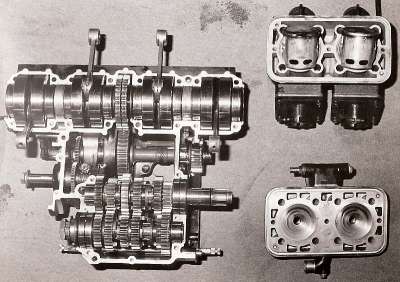
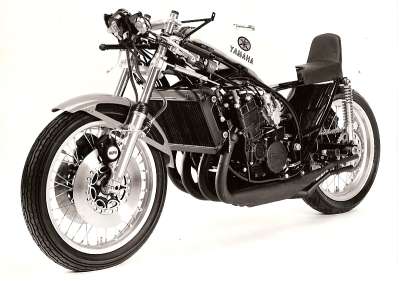
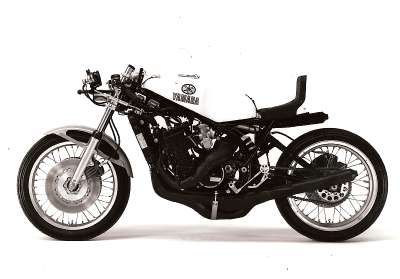



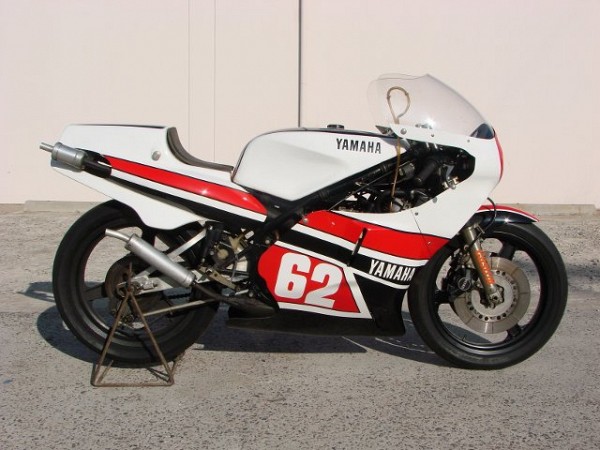
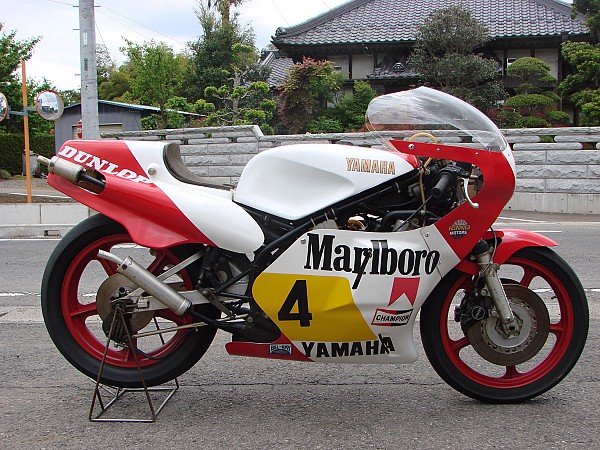
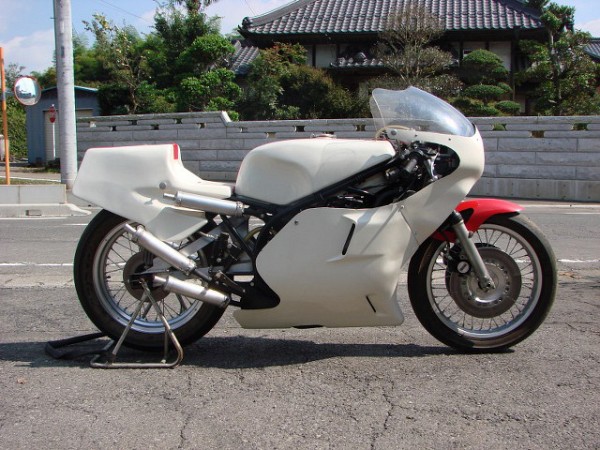
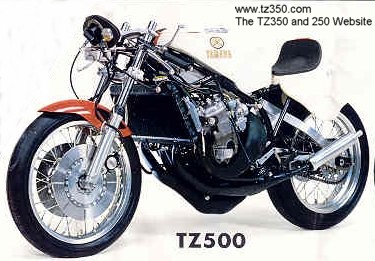
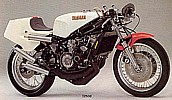
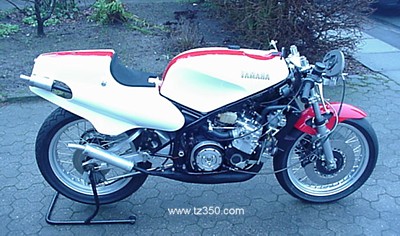 Just
two more models of TZ500's rolled off the assembly line following the "G",
they were the "H" and "J".
Just
two more models of TZ500's rolled off the assembly line following the "G",
they were the "H" and "J". 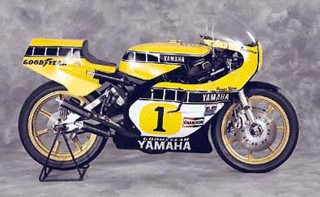
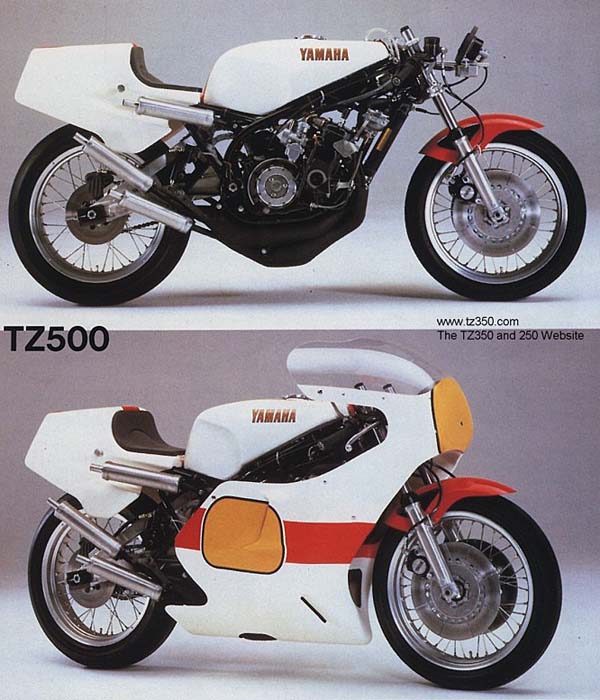



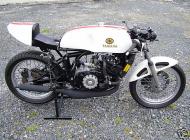
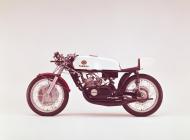
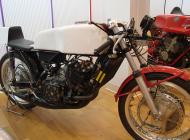
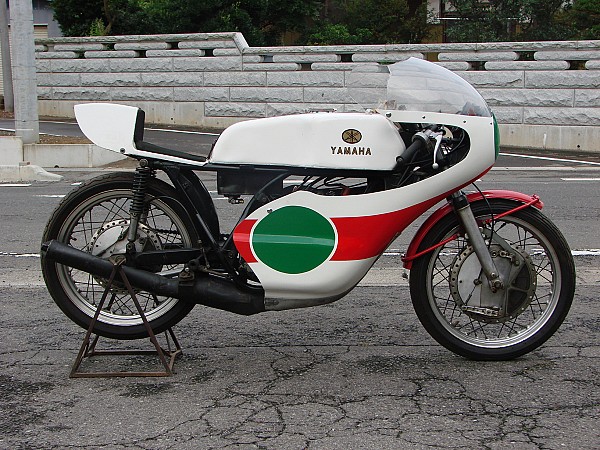


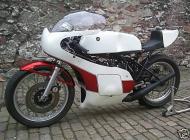

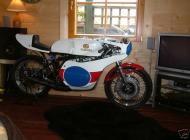




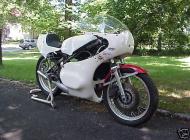


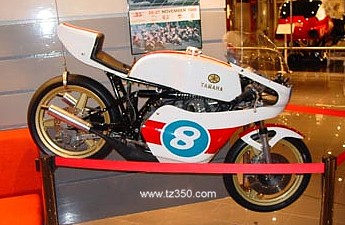 Picture:
What is essentially a TZ350E on display in the Macau Museum. This bike has
an F model top end, Lockheed calipers and magnesium wheels. It also
has the gear shift foot lever fitted to the right hand side of the bike
indicating that possibly a British rider may have raced it at Macau. (Photo
provided by the Macau Museum.)
Picture:
What is essentially a TZ350E on display in the Macau Museum. This bike has
an F model top end, Lockheed calipers and magnesium wheels. It also
has the gear shift foot lever fitted to the right hand side of the bike
indicating that possibly a British rider may have raced it at Macau. (Photo
provided by the Macau Museum.)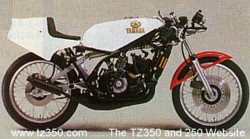 The
introduction of the "F" model in 1979 saw, finally, effective and
much anticipated improvements to the now 3 year old TZ 350 C/D/E. Much to
the relief of Yamaha devotees, the factory made several changes to the bike,
some advantageous, in time owners learnt others were not. They included:
The
introduction of the "F" model in 1979 saw, finally, effective and
much anticipated improvements to the now 3 year old TZ 350 C/D/E. Much to
the relief of Yamaha devotees, the factory made several changes to the bike,
some advantageous, in time owners learnt others were not. They included:

